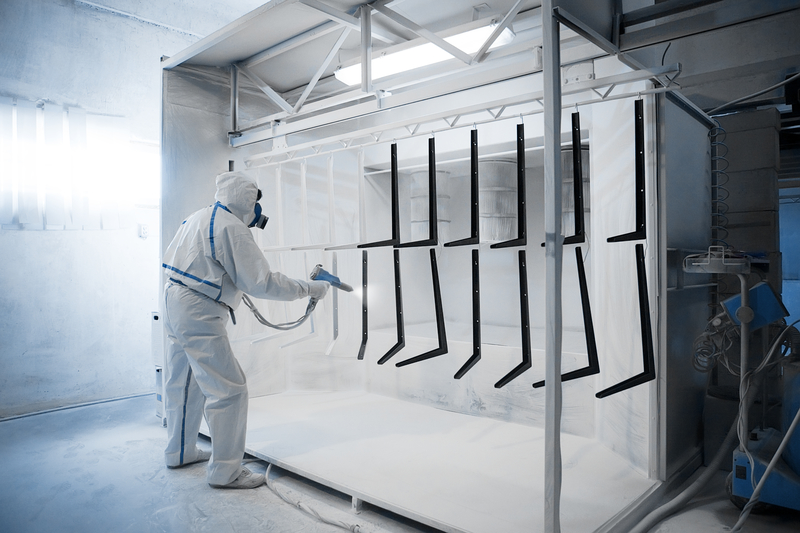Everything You Need To Know About Powder Coating
Powder coating is an environmentally favoured method of producing perfect finishes because it eliminates overspray wastage and solvent-based paint usage. The unused powder may be greatly recycled and used again. Technology has evolved making the process a common choice for plastic, ceramics and even wood. Powder coating is one of the fastest growing coating media in enhancing great finishing properties.
Types of Powder Coating
There are two major powder coating types: thermoplastics and thermosets. For thermosetting the powder simultaneously bakes and reacts with powder polymer chemicals which increases the molecular weight thereby improving the performance properties. The thermoplastic technique doesn’t change particularly nor have any extra additional reactions. It basically flows out into the final coating.
Powder Coating Step-by-Step
Pre-treatment
This is preparing the part or component to achieve the best possible finish. It’s essential to get rid of metal oxides and oils. It’s performed by a variety of mechanical and chemical procedures dependent on the material, size and the required finished product. Chemical pre-treatment involve using chromates or phosphates in spraying or submersion.
Other preparation methods are shot-blasting and sandblasting whereby blasting abrasives are used to prepare the plastic, wood or glass and give surface texture. Metal and plastic media blasting sensitive to substrates like aluminium are ground using suitable silicon carbide.
Power Application
An electrostatic paint sprayer is the most used appliance in this step. The subject is grounded, the spray gun imparts a positive electric charge onto the powder which is then sprayed, and then accelerated towards the component by electrostatic charge. The part is heated to melt the powder into a uniform film then cooled to form a hard coating. Preheating helps in achieving a more uniform finish. It should be done carefully to avoid excess powder.
Fluidized bed coating is another method used whereby the substrate is heated and then dipped into an aerated power-filled bed. The dipped powder melts and sticks to the hot object. Further heating is needed to finish curing the coating.
Another opted method is electrostatic fluidised bed coating whereby it uses the same fluidising methods as above but with less bed powder depth. Electrostatic charging is applied on the bed so that the powder becomes charged while being lifted by fluidising air. Powder charged particles from a cloud of charged powder above the fluid bed which attracts a grounded part when passed through the particles’ charged cloud. The existing parts are not preheated.
Curing
When thermoset powders are brought near to high increasing temperature, they start melting, flowing out and reacting to form a higher molecular polymer which is a bit weighty. The curing process requires a certain temperature degree for a certain length of time to enhance full cure and establish full and targeted designing properties.
Powder coating as an economical and environmentally friendly system not only offers the desired aesthetic features of the final product but also gives excellent resistance and durability to chemical corrosion and scratches. Powder coating gives finished products hence no mixing is required as it eliminates any variable. Besides, it decreases the processing duration.
To find out more about powder coating and our equipment, please feel free to get in touch.

